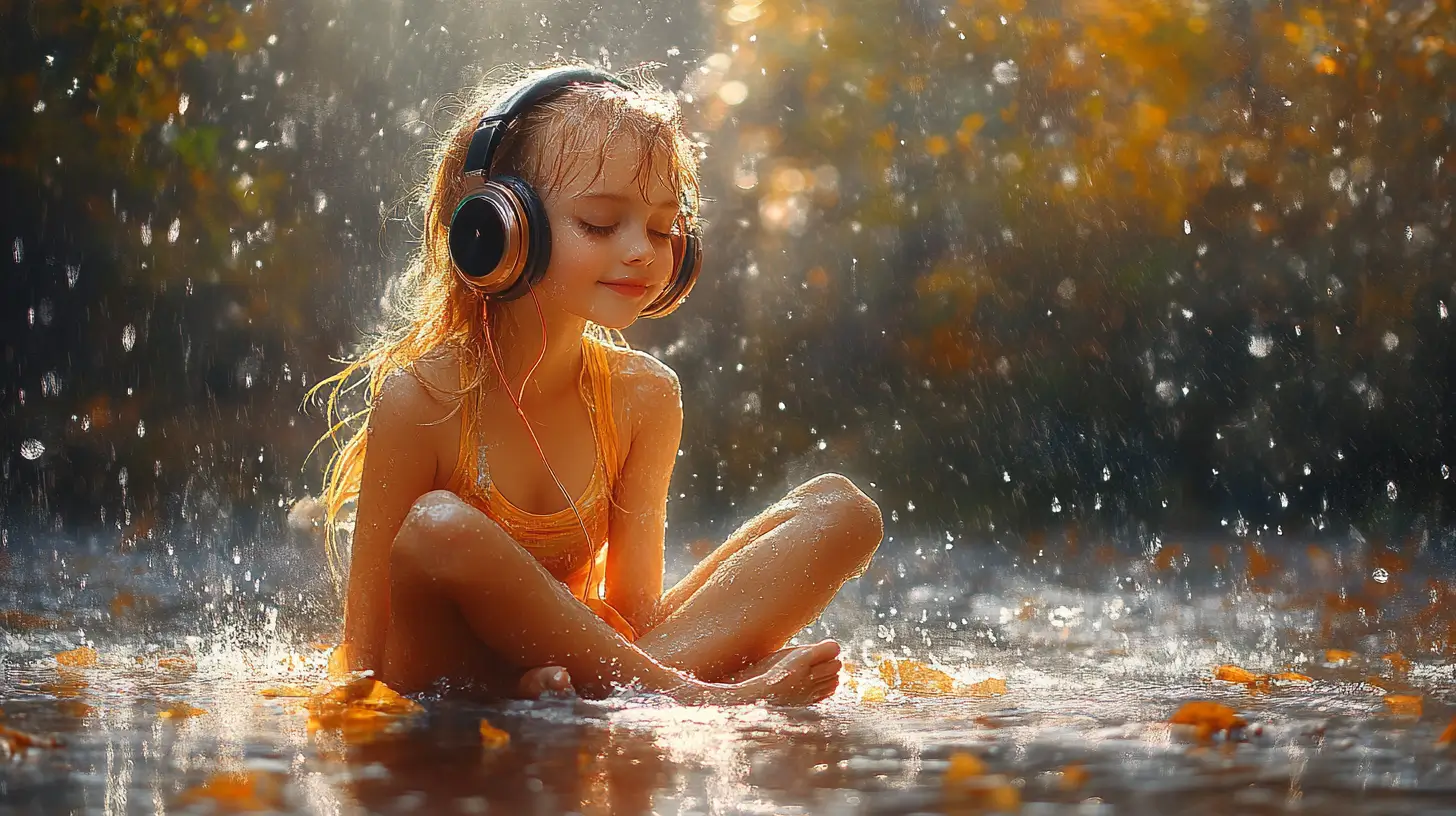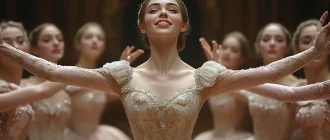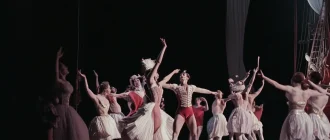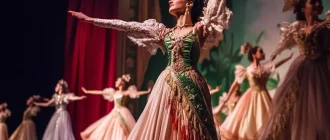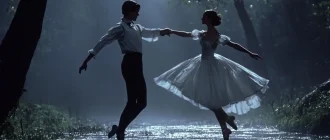Were you looking for essential ballet music? Discover 15 timeless ballet music scores that have shaped this art form. The evolution of ballet music began in the nineteenth century, with significant developments occurring in Paris, where grand opera and ballet became lavish spectacles. Composers like Tchaikovsky elevated the genre to the status of ballet music. Learn about each composer and the pieces that made ballet history from Tchaikovsky to Prokofiev.
Key Takeaways
- Tchaikovsky’s ‘Swan Lake’ and ‘The Nutcracker’ are iconic ballets celebrated for their emotional depth and memorable melodies, making them staples in the ballet repertoire.
- Prokofiev’s Romeo and Juliet and Cinderella exemplify the richness of ballet music, blending lyrical melodies with dramatic storytelling. Stravinsky’s The Rite of Spring innovatively challenged classical music norms.
- Contemporary ballets like Kaija Saariaho’s ‘Maa’ and Max Richter’s ‘Woolf Works’ push the boundaries of traditional ballet music, showcasing experimental compositions that resonate with modern audiences.
Ballets Music Podcast
Tchaikovsky’s Swan Lake
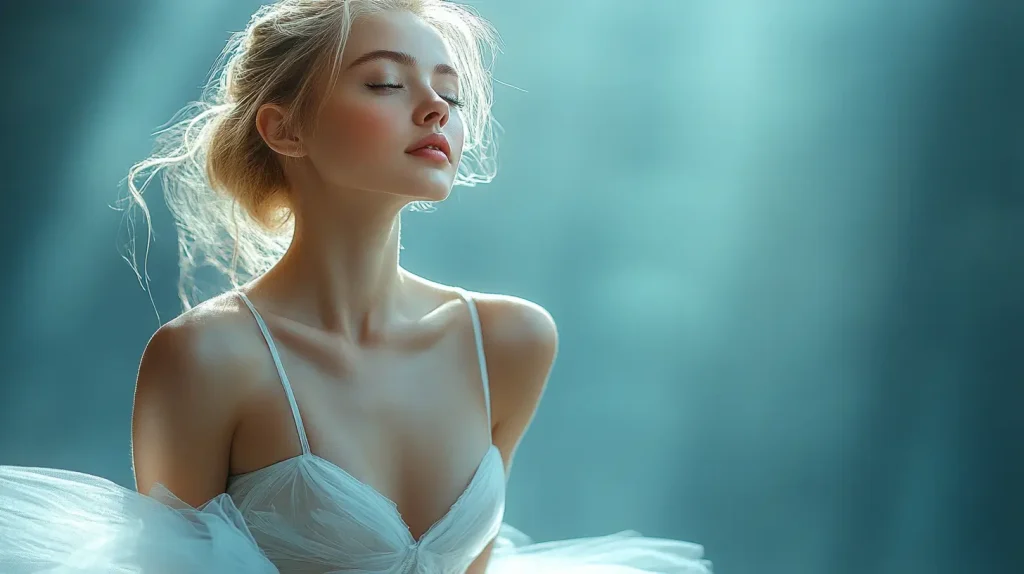
“Swan Lake” is perhaps the epitome of the best ballet music ever, recognized for its symphonic richness and emotional depth. Composed by the great Russian composer Pyotr Ilyich Tchaikovsky, it tells the tragic love story of Prince Siegfried and Princess Odette, who has been cursed to live as a swan. The best ballet music beautifully captures the essence of the narrative, drawing audiences into a world of romance, magic, and heartbreak.
The “Swan Lake” score is celebrated for its timeless quality. It showcases Tchaikovsky’s mastery of blending orchestral textures with poignant melodies. Composed specifically to enhance the dance experience, it highlights Tchaikovsky’s ability to create music that complements the choreography. Despite its initial failure, the ballet was revamped in 1895 and has since become one of the most popular ballets in the world. Its iconic themes and lush orchestration have made it a staple in the repertoire of the Royal Ballet and other leading companies.
The music reaches an emotional zenith in the climactic moments as Prince Siegfried mistakenly proposes to Odile, the black swan. This leads the plot to a tragic resolution where Odette and Siegfried choose to die together by throwing themselves into the lake. This powerful conclusion and plot, underscored by Tchaikovsky’s hauntingly beautiful score, ensure “Swan Lake” remains a beloved classic in the ballet canon.
Prokofiev’s Romeo and Juliet

Sergei Prokofiev’s “Romeo and Juliet” is a monumental work in ballet music. Composed between 1940 and 1944, during the upheaval of World War II, this ballet score captures the tragic romance of Shakespeare’s timeless tale. Prokofiev moved to the Soviet Union in 1935 to work on this project, facing numerous challenges that delayed its full performance at the Bolshoi Theatre.
One of the most famous pieces from this ballet is the “Dance of the Knights,” which is performed as part of the orchestral suite derived from “Romeo and Juliet.” This powerful and majestic theme has gained popularity beyond the ballet and is often used in various adaptations and concert performances. Prokofiev also created three orchestral suites and wrote a piano suite based on the music, further showcasing the versatility and richness of his composition.
For example, the ballet underwent significant revisions before its Soviet premiere in 1940. Still, its enduring appeal lies in Prokofiev’s ability to convey the story’s intense emotions and dramatic tension through his music. The combination of lyrical melodies and dynamic orchestration makes “Romeo and Juliet” a quintessential example of the ballet music genre, which continues to captivate audiences worldwide.
Stravinsky’s The Rite of Spring
Igor Stravinsky’s “The Rite of Spring” is a landmark in the history of ballet music. It is known for its revolutionary approach to rhythm and harmony. Premiering in 1913 at the Théâtre des Champs-Élysées in Paris, the ballet’s debut was so controversial that it incited a riot among the audience. This reaction was a testament to the groundbreaking nature of Stravinsky’s composition, which challenged the conventions of classical ballet music at the time.
The music of “The Rite of Spring” is characterized by its complex rhythms and dissonances, creating a sense of primal energy and raw power. Stravinsky imagined a pagan ritual culminating in the sacrificial dance of a young girl, which dancers from the Ballets Russes, led by Serge Diaghilev, brought to life with striking choreography. Even today, the score remains as audacious and impactful as it was at its world premiere.
Stravinsky’s innovative use of orchestration, movement, and rhythm in “The Rite of Spring” has left a lasting legacy on both ballet and classical music. The piece’s ability to evoke visceral reactions from dancers and its influence on subsequent generations of composers and choreographers make it an essential work for anyone interested in the evolution of ballet music.
Tchaikovsky’s The Nutcracker

No discussion of the best ballet music ever would be complete without mentioning Tchaikovsky’s “The Nutcracker,” a perennial favorite during the holiday season. This enchanting ballet tells the story of a young girl named Clara, who embarks on a fantastical adventure on Christmas Eve. The score is filled with memorable tunes, including the “Waltz of the Flowers” and “The March,” which have become synonymous with the festive spirit.
One of the most performed and iconic pieces from “The Nutcracker” is the “Dance of the Sugar Plum Fairy,” known for its delicate and magical quality. This piece, along with many others in the ballet, showcases Tchaikovsky’s ability to create vivid musical landscapes and dances that enhance the choreography and narrative. The ballet’s popularity has only continued to grow since its premiere, making it a staple of the Royal Ballet and other companies worldwide.
“The Nutcracker” highlights Tchaikovsky’s genius as a composer and exemplifies the enduring appeal of ballet music. Its ability to evoke wonder and joy makes it a beloved classic that continues to enchant audiences of all ages, year after year.
Adolphe Adam’s Giselle
Adolphe Adam’s “Giselle” is a cornerstone of the classical ballet repertoire, known for its poignant story and expressive music. The ballet follows the tragic tale of a peasant girl named Giselle, who falls in love with a nobleman in disguise and dies of heartbreak upon discovering his true identity. The “Mad Scene,” where Giselle’s emotional turmoil reaches its peak, serves as the ballet’s dramatic climax, blending themes of love and betrayal.
Adam’s score employs leitmotifs to represent specific characters and emotions, adding depth to the narrative. The music also integrates European dance styles, enriching the ballet’s overall texture and helping to convey the story’s emotional nuances.
“Giselle” remains one of the most popular ballets, cherished for its beautiful music and timeless themes.
Stravinsky’s The Firebird
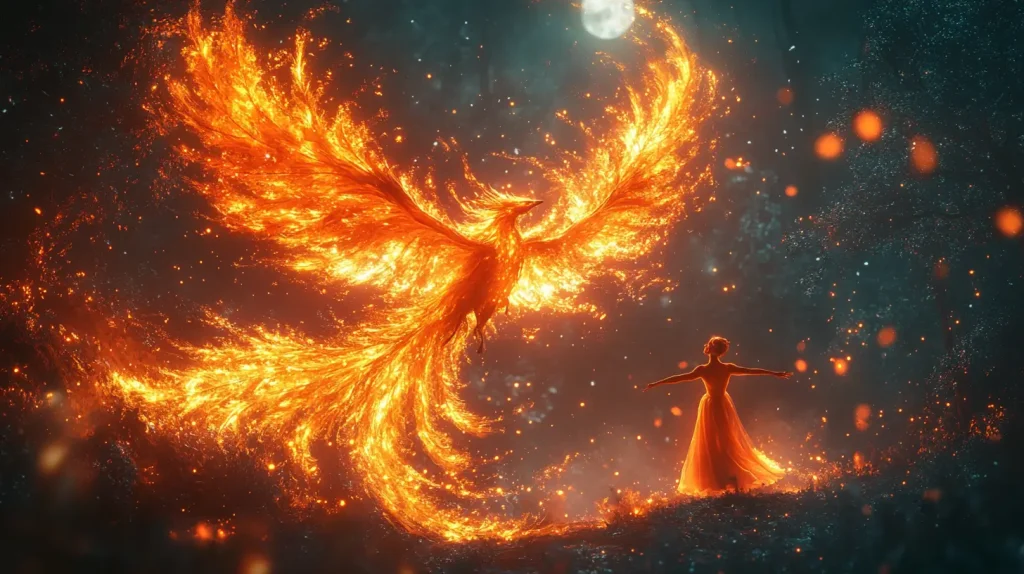
Igor Stravinsky’s “The Firebird” is another pivotal work in ballet music, marking his first collaboration with Sergei Diaghilev’s Ballets Russes. Premiering in 1910, the full ballet score incorporates Russian folk melodies, creating a vibrant and distinctive score that captures the essence of the story. The narrative revolves around Prince Ivan and the magical Firebird, who helps him overcome evil forces and save his princess.
The music of “The Firebird” is celebrated for its dynamic orchestration and imaginative use of leitmotifs, which bring the characters and themes to life. Stravinsky’s innovative approach to composition in this ballet set the stage for his subsequent works, solidifying his reputation as one of the great composers of the 20th century.
Léo Delibes’ Coppélia
Léo Delibes’ Coppélia is a delightful ballet that combines humor and enchanting music. The story centers on Swanilda, who suspects her fiancé, Franz, of infidelity when he becomes infatuated with a lifelike doll created by the toymaker Dr. Coppélius. The ballet’s playful narrative and charming village setting provide a perfect backdrop for Delibes’ lively and captivating score.
The music of “Coppélia” is characterized by its light-hearted and whimsical melodies and dances, which perfectly complement the ballet’s comedic elements and plot. The final act culminates in a joyful wedding celebration, emphasizing the triumph of love and happiness. This ballet remains a favorite among audiences for its engaging story, delightful music, and dances.
Maurice Ravel’s Daphnis and Chloé
Maurice Ravel’s “Daphnis et Chloé” is a masterful ballet that premiered in 1912 at the Théâtre du Châtelet in Paris, choreographed by Michel Fokine. Based on a pastoral romance by the Greek author Longus, the ballet narrates the love story between Daphnis, a goatherd, and Chloé, a shepherdess. The score’s lush harmonies and impressionist style create a rich, mythical atmosphere that draws the audience into a world of nymphs, pirates, and pastoral settings.
Ravel’s composition is a “symphony chorégraphique” that runs for nearly an hour, making it his longest orchestral work. The music features an orchestra and four main leitmotifs, providing thematic coherence throughout the ballet. Ravel also created two orchestral suites from the ballet, further showcasing the orchestra’s intricate and evocative musical landscape.
“Daphnis et Chloé” is celebrated for its complex and beautiful music, which perfectly complements the ballet’s narrative and choreography. Its place in the repertoire of the Royal Ballet and other leading companies underscores its lasting impact and appeal.
Kaija Saariaho’s Maa
Kaija Saariaho’s “Maa” is a contemporary ballet that pushes the boundaries of traditional ballet music. Structured into seven distinct movements, each further divided into seven subsections, the composition explores abstract themes related to journeys and new worlds. Saariaho’s collaboration with choreographer Carolyn Carlson introduced a creative tension between improvisation and structured musical planning.
The music of the album “Maa” seamlessly blends electronic sounds with natural audio elements, such as footsteps and water, to create a unique auditory experience. The gradual transformation of sound, with a focus on timbre, highlights Saariaho’s innovative approach to composition.
This ballet album and film stand out for their experimental nature and the immersive quality of their music.
William Grant Still’s Sahdji
William Grant Still’s “Sahdji” is set during a hunting festival of the Azande tribe in Central Africa, weaving a narrative of love, death, betrayal, and tragic consequences. Sahdji, the protagonist, falls in love with her husband’s nephew, leading to a series of events that culminate in her mandated suicide following her husband’s death.
The ballet’s music captures the cultural essence of the setting, incorporating traditional African rhythms and melodies. “Sahdji” is notable for its unique narrative and how it integrates cultural elements into the ballet form, making it a significant work in the history of ballet music.
Alvin Ailey’s Revelations
Alvin Ailey’s “Revelations” is a seminal work in modern dance, deeply rooted in the African-American experience. Created in 1960, the ballet seamlessly integrates traditional spirituals with Ailey’s distinctive choreography, reflecting his own experiences in church and the works of literary figures such as James Baldwin and Langston Hughes. “Revelations” has been performed globally more than any other modern dance piece, a testament to its profound impact and universal appeal.
The choreography of “Revelations” combines the Horton technique with Ailey’s style, showcasing a blend of strength, grace, and emotional depth. The ballet is divided into three sections, each symbolizing themes of earth, purification, and celebratory spirituality, represented through distinct color palettes. This structured yet expressive approach enables the audience to embark on a journey of cultural and spiritual awakening.
“Revelations” has been featured in significant events, including the Opening Ceremonies of the 1968 Olympics and various presidential inaugurations. Its enduring popularity and powerful message continue to resonate with audiences, making it an essential part of the ballet music canon.
Wayne McGregor’s Multiverse
Wayne McGregor’s Multiverse is a contemporary ballet that premiered in 2016. It pushes the boundaries of traditional dance and music. The score, “Runner,” is an intense composition written for orchestra, featuring strings, piano, wind, and percussion, which creates a dynamic and immersive auditory experience.
“Multiverse” is known for its innovative choreography and for exploring concepts of time, space, and multiple realities. McGregor’s work is a testament to ballet’s evolving nature and culture, blending modern techniques with classical foundations to create something new and compelling.
This ballet exemplifies the limitless possibilities within the world of dance and music.
Max Richter’s Woolf Works
Max Richter’s “Woolf Works” is a modern ballet inspired by the writings of Virginia Woolf, including her renowned novels and letters. The score blends orchestral and electronic textures, creating a unique and haunting soundscape that perfectly complements the ballet’s themes. The ballet consists of three sections based on Woolf’s famous novels, each showcasing a different aspect of her literary genius.
Richter’s composition opens the album with a recording of Virginia Woolf’s voice, adding a deeply personal touch to the score. The music features hidden complexities, described by Richter as ‘asymmetries and trapdoors’ in rhythm and harmony, which mirror the intricate and often challenging nature of Woolf’s writing. The album’s title, “Three Worlds: Music from Woolf Works,” encapsulates the multifaceted nature of writing the ballet.
“Woolf Works” is a testament to the power of interdisciplinary collaboration. It combines literature, film, dance, and music to create a deeply moving and intellectually stimulating experience. The show highlights the ongoing evolution of ballet music, film, and dance, as well as their ability to adapt and resonate with contemporary audiences.
Christoph Willibald Gluck: Dance of the Blessed Spirits
Christoph Willibald Gluck’s “Dance of the Blessed Spirits” originates from his opera “Orfeo ed Euridice,” which premiered in Vienna in 1762. Gluck aimed to simplify opera, moving away from the complex structures of ‘opera seria’ to focus on clarity and emotional expression in music and storytelling. This piece features a notable flute solo, emblematic of its ethereal and serene qualities.
The music perfectly captures the otherworldly atmosphere of the Blessed Spirits’ realm with its delicate and tranquil melodies. Dance of the Blessed Spirits remains a beloved piece in the ballet repertoire, celebrated for its beauty and emotional depth.
Sergei Prokofiev: Cinderella
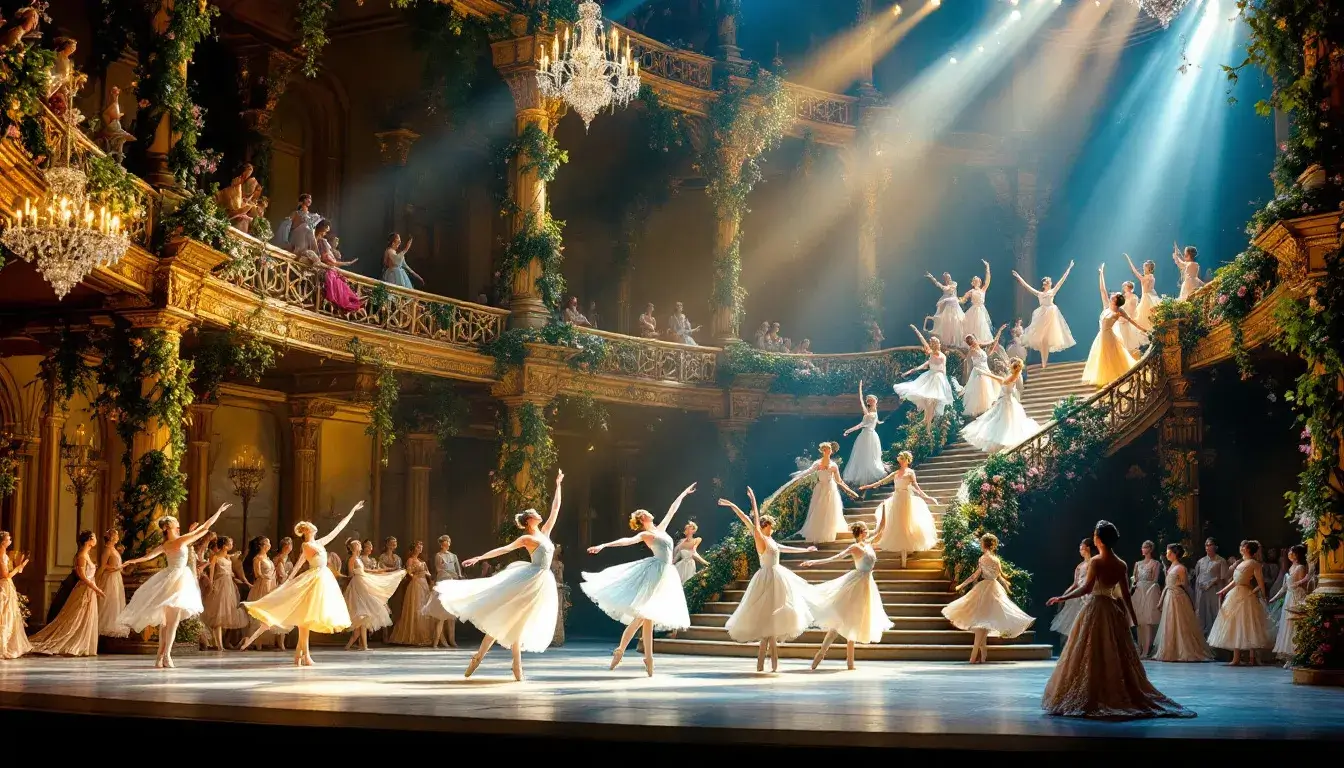
Sergei Prokofiev’s “Cinderella,” which premiered in 1945, is celebrated for its charming and lively musical themes. The score features a diverse orchestration, utilizing a range of instruments from flutes to percussion, which creates a vibrant soundscape. The music perfectly aligns with the fairytale’s enchanting narrative, blending romantic and whimsical melodies to bring the story to life.
“Cinderella” remains one of the most beloved ballets, known for its beautiful music and captivating story. Prokofiev’s ability to convey the magic and wonder of the fairytale through his score ensures its lasting appeal in the world of ballet.
Resume
In exploring and writing these top 15 best ballet music and scores, we have traversed a rich and diverse landscape of musical and choreographic brilliance. Each composer has contributed uniquely to ballet music and dance, from the timeless classics of Tchaikovsky and Prokofiev to the avant-garde innovations of Stravinsky and Saariaho. These scores enhance the dance and stand as monumental works of art in their own right.
The enduring appeal of these ballets lies in their ability to evoke deep emotions and tell compelling stories through the universal language of music. As you continue your journey into ballet, these compositions will serve as both a foundation and an inspiration, highlighting the transformative power of ballet music. Let these masterpieces guide you to new heights of appreciation for the art form.
Frequently Asked Questions
What makes “Swan Lake” such a timeless piece in ballet music?
“Swan Lake” is timeless due to its profound emotional depth and symphonic richness. It beautifully conveys the tragic love story of Prince Siegfried and Princess Odette. Its revival in 1895 solidified its place as a beloved masterpiece in the ballet music genre.
Why is Prokofiev’s “Romeo and Juliet” considered a monumental work?
Prokofiev’s Romeo and Juliet is regarded as a monumental work due to its profound emotional depth and the incorporation of powerful themes. Pieces like the Dance of the Knights vividly convey the tragic romance of Shakespeare’s narrative. The composition’s ability to evoke strong emotions resonates with audiences, solidifying its status in the classical repertoire.
What was the reaction to the premiere of Stravinsky’s “The Rite of Spring”?
Stravinsky’s “The Rite of Spring” premiere in 1913 incited a riot, reflecting the audience’s outrage at its controversial content and innovative musical elements. This response underscored the work and composer’s profound impact on the culture and evolution of classical music.
How does “The Nutcracker” remain a holiday favorite?
“The Nutcracker” remains a holiday favorite due to its enchanting Christmas narrative and iconic music, such as “Waltz of the Flowers” and “Dance of the Sugar Plum Fairy.” These elements create a captivating experience that resonates with audiences each season.
What is unique about Kaija Saariaho’s “Maa”?
Kaija Saariaho’s “Maa” is notable for its integration of electronic sounds with natural audio elements, structured into seven movements with further subdivisions. It delves into abstract themes of journeys and new worlds. This intricate composition highlights her innovative approach to exploring sound.
What distinguishes ballet music from a regular concert score?
Ballet music is written to be danced to, so its pacing, phrase lengths, and dramatic arcs are choreographed around physical movement. Composers keep an ear on counts of eight, build in clear cues for lifts and landings, and leave “breathing space” for applause or complicated transitions—considerations a symphonic score rarely needs.
How do choreographers and composers collaborate when creating a brand-new work?
The process is usually iterative: a choreographer outlines dramatic structure and key dance moments, the composer drafts musical sketches, and the two trade revisions in studio workshops until steps and score lock together. Face-to-face time in rehearsal is crucial because tempo or bar lengths often shift once dancers try material on the floor.
Why does the conductor sometimes change the tempo during a live performance?
Even a subtle adrenaline rush can make a principal finish a diagonal faster (or slower) than planned. A ballet conductor watches the stage as closely as the score and can adjust the tempo of beats in real time, ensuring that music and movement remain seamless.
Are ballet scores always performed live?
Major companies insist on live orchestras, but small tours, school productions, or tight budgets frequently rely on high-quality recordings. While recordings save money, dancers lose the give-and-take of a responsive pit; therefore, many keep both options in their repertory schedules.
What exactly is a “ballet suite,” and why is it popular in concerts?
A suite is a concert-length arrangement of highlights from a full ballet. Stripping out scene-change music and repeats lets orchestras share the best melodies in 20–25 minutes, making the score accessible to listeners who may never see the full staging.
How big is a typical ballet orchestra, and what instruments does it use?
Contemporary pits range from approximately 40 players in mid-size theaters to 70 or more in large houses. You’ll still find the classical string, woodwind, brass, and percussion sections, but ballet pits often expand the percussion bench (think celesta for “Dance of the Sugar-Plum Fairy”) and trim back brass so dancers aren’t overpowered.
What are leitmotifs, and how do they help tell the story?
A leitmotif is a short, recurring musical idea that signals a character, emotion, or plot twist. When audiences hear the motif reappear—say, at a different tempo or in a minor key—they instantly sense what is happening onstage, even if the character isn’t dancing at that moment.
How did Igor Stravinsky change the sound of ballet?
Stravinsky upended late-Romantic sweetness with jagged rhythms, shifting meter, and bold orchestration. His groundbreaking scores pushed choreographers toward more angular, modern movement and opened the door for 20th-century experiments in both music and dance.
Can a choreographer set a ballet to music that wasn’t written for dance?
Absolutely. Balanchine’s “Concerto Barocco,” for example, turns Bach’s Double Violin Concerto into pure ballet classicism. The key is finding a score with a clear structure and pulse; the dance then becomes the lens through which audiences “see” the music.
How do copyright rules affect ballet music choices?
In the U.S., music typically enters the public domain 70 years after the composer’s death. If a score is still under copyright, the company must license both the composition and any specific orchestration or recording. Public-domain works are free to perform, but a new arrangement may carry its copyright.
Why do some revivals use reduced orchestrations?
The original score might call for forces too large for a regional theater’s pit or budget. Orchestrators pare down the instrumentation—often doubling parts across fewer players—so the music fits the space while preserving the composer’s intent.
How has recorded music changed rehearsal practice?
Digital tracks enable dancers to practice solos independently without hiring an accompanist, and tempo-control apps allow teachers to slow down difficult passages for technique classes. Once the cast is comfortable, live piano or full orchestra rehearsals fine-tune musical nuance.
What musical challenges does pointe work create for composers?
Pointe technique demands audible landings, so composers often underscore big jumps with strong downbeats or give ballerinas rhythmic support—triplets, mazurka accents, or pizzicato—so the audience can “hear” the footwork.
How do dancers and musicians communicate during the performance?
Eye contact and body language are constant. A conductor might lift a baton to cue a difficult pirouette sequence; a dancer can signal for more time by elongating an arm line. Both groups attend spacing calls so everyone understands visual cues.
What should audiences listen for to deepen their ballet experience?
Pick out recurring themes, notice how orchestral color changes with mood, and track tempo shifts that match a dancer’s emotional journey. Treat the pit as a second stage: the score often foreshadows action before the choreography reveals it.
Which trends define 21st-century ballet scores?
Many contemporary composers blend classical technique with minimalism, jazz harmonies, or electronic textures. Modular scoring is common—short segments loop or reorder easily, giving choreographers flexibility for multimedia staging and site-specific work.
Is it normal to cut or rearrange music for a new production?
Yes. Directors may streamline story ballets for today’s shorter attention spans or re-sequence divertissements to spotlight a particular cast. All edits require musical and choreographic sign-off to ensure seamless transitions.
How does cultural background influence ballet music styles?
Russian ballets often feature lush strings and folkloric dances, while French scores favor elegance and clarity. American works, on the other hand, lean into jazz syncopation and big-band brass. Local dance traditions shape rhythmic vocabulary, giving each national school a distinct sonic fingerprint.

